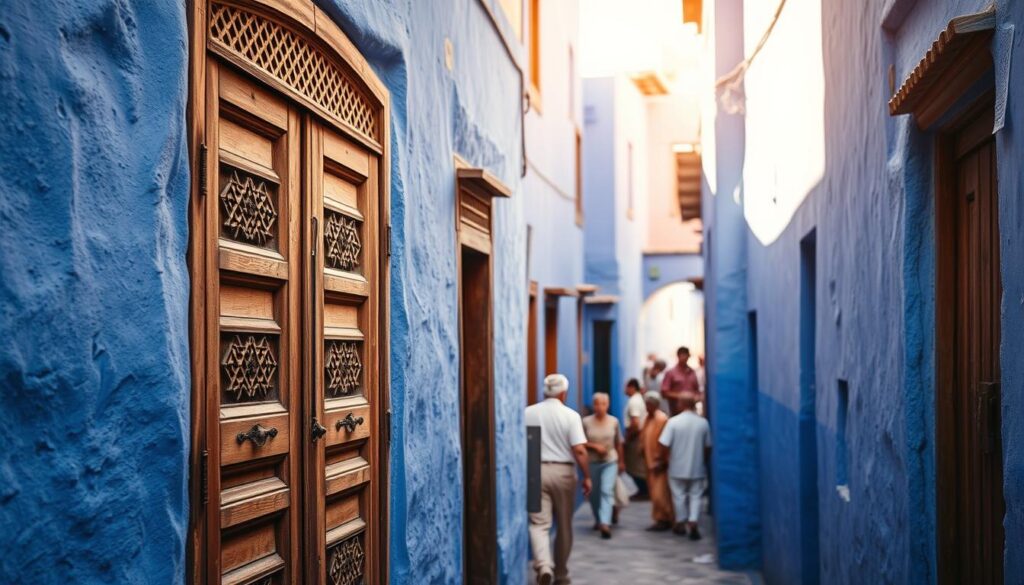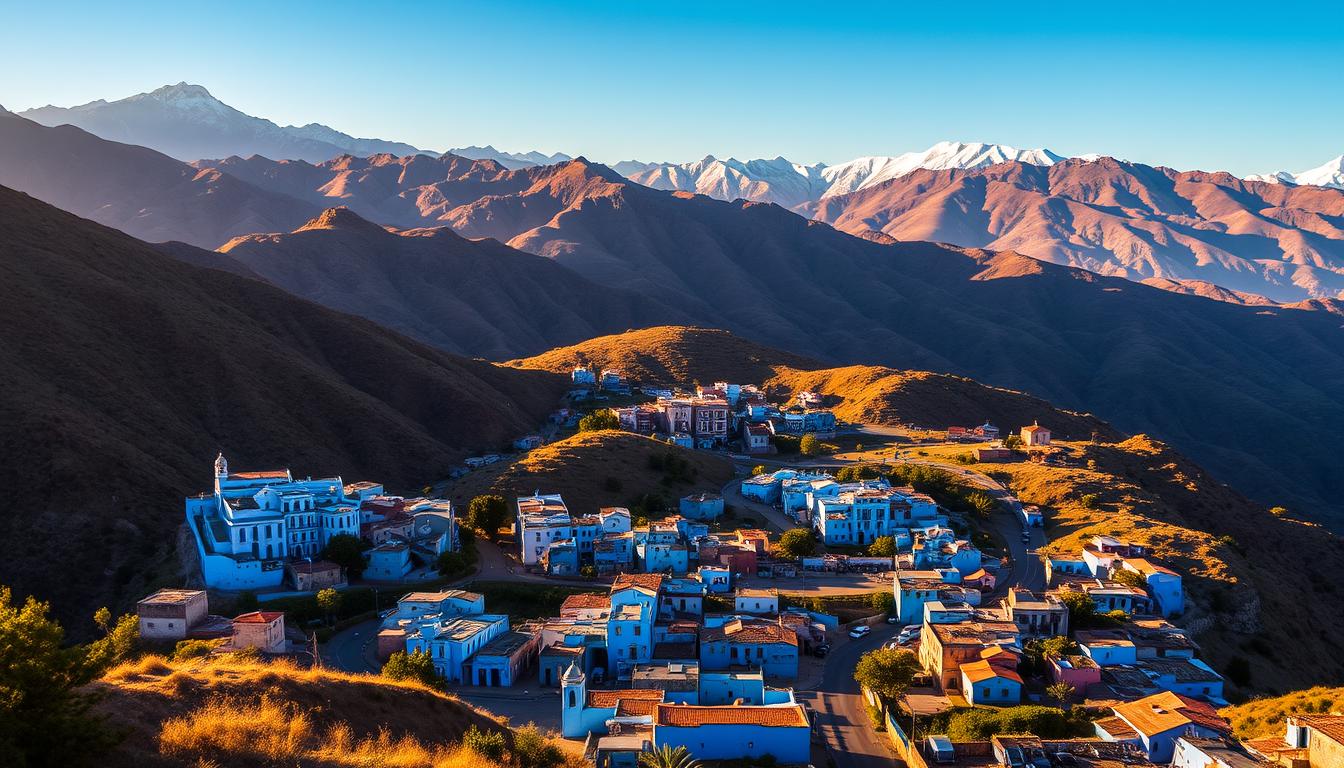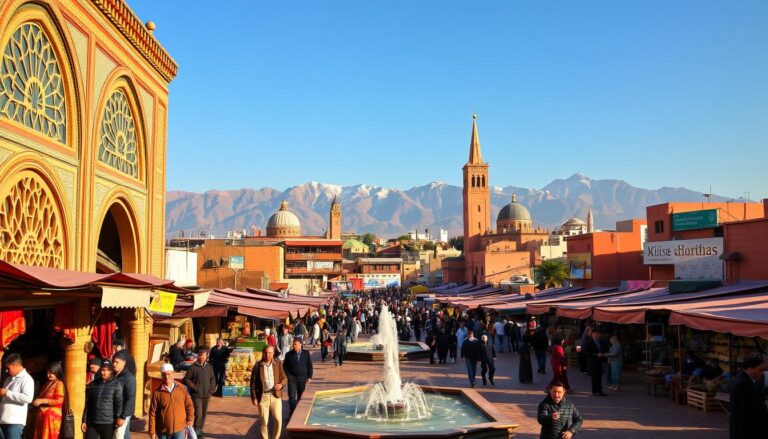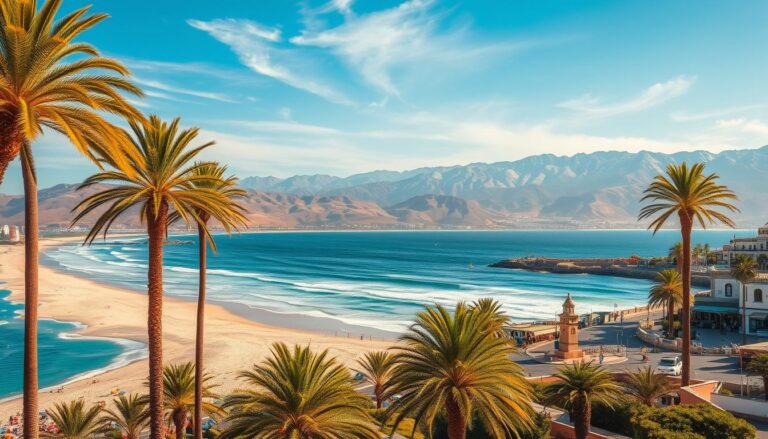Chefchaouen Countryside Travel Guide: Morocco’s Green Side of the Blue City
Table of Contents
Chefchaouen Countryside Travel Guide: Morocco’s Green Side of the Blue City
Did you know the blue-painted walls of northern Morocco’s most iconic city were originally meant to repel mosquitoes, not tourists? Nestled 600 meters high in the Rif Mountains, this destination blends history and nature unlike anywhere else. Founded in 1471 as a fortress against invaders, its name literally means “look at the horns”—a nod to the twin mountain peaks guarding its skyline.
While its vibrant blue medina draws photographers worldwide, the true magic lies beyond the city limits. Imagine trading narrow cobblestone streets for hiking trails dotted with olive groves and waterfalls. Here, you’ll find quiet valleys where Berber traditions thrive and panoramic views stretch to the horizon.
This guide unlocks both the famous “morocco blue” streets and the lush countryside few travelers fully explore. Discover when to visit for perfect weather, how local artists blend Arab and Andalusian influences, and why this region feels refreshingly laid-back compared to busier Moroccan destinations.
Key Takeaways
- Located in northwest Morocco’s Rif Mountains, 100+ km from Tangier
- Famous for its blue-washed buildings and artistic community
- Offers mountain hikes, cultural tours, and serene natural escapes
- Mix of Berber, Arab, and Spanish cultural influences
- Best visited in spring or fall for mild temperatures
- Combines urban charm with outdoor adventures
Introduction: Discovering Morocco’s Blue Gem
Imagine stepping into a world where every shade of blue tells a story. This mountain town welcomes over 120,000 visitors annually, yet retains its tranquil charm. While summer brings European travelers to its 200 hotels, quieter seasons reveal hidden waterfalls and olive groves untouched by crowds.
Setting the Scene for Your Journey
You’ll find more than photo opportunities here. Narrow lanes wind past cornflower-blue doorways, each hue reflecting centuries of tradition. Locals share tales of the paint’s original purpose—repelling insects, not just attracting Instagrammers. Fresh mint tea aromas mix with cedar wood smoke as you explore.
Unlike Marrakech or Fez, mornings here mean chatting with weavers dyeing wool in natural indigo. Evenings bring shared meals in family-run riad courtyards. The rhythm slows, inviting deeper connections with Berber crafts and mountain folklore.
What Makes This Guide Unique
We skip the obvious spots to show you secret viewpoints where the Rif Mountains meet sapphire rooftops. You’ll learn why artists flock here—not just for the light, but for workshops preserving ancestral pottery techniques. Our tips help you dodge tourist peaks while catching golden-hour magic on cobblestones.
This isn’t a checklist destination. It’s a place to sip almond milk coffee beside 15th-century walls, listening to echoes of Spanish and Arabic dialects. Ready to trade crowded souks for starlit mountain silence? Let’s begin.
History and Cultural Heritage of Chefchaouen
Walking through cobalt alleyways, you’re stepping into a living mosaic of civilizations. Refugees from medieval Spain’s fallen kingdoms shaped this mountain sanctuary, blending Berber resilience with Andalusian artistry. Their descendants still mix natural pigments for the walls that glow like crushed lapis lazuli.

Origins, Myths, and Architectural Wonders
Three waves of exiles defined this region: Muslims fleeing Ferdinand and Isabella’s reconquest, Jews escaping 15th-century persecution, and Moriscos expelled in 1609. Locals debate why they began painted blue their homes. “It cools the air,” claims a dyer stirring indigo vats. “It points our hearts upward,” argues a tea merchant.
You’ll notice subtle clues in the buildings – arched doorways from Seville, geometric tiles from Fez, and cedar latticework from mountain artisans. The 46,168 residents preserve these details while debating modern touches. One elder jokes, “Our medina painted itself blue like the sky teaching the earth to dream.”
The Blend of Traditions and Modern Influences
Today’s artisans balance ancestral methods with tourist demands. Watch a weaver create walls-matching textiles using plants from nearby valleys. Young people repurpose olive wood into chess sets while elders recite poetry in Haketia, a Judeo-Spanish dialect.
Three cultural layers shine brightest here:
- Berber earth-toned pottery displayed beside electric-blue painted blue staircases
- Spanish guitar melodies drifting from cafes serving mint-infused espresso
- Jewish quarter’s cobalt hues contrasting with mosque minarets piercing mountain mists
Through centuries of change, the residents mastered reinvention without losing their soul. As you chat with shopkeepers, you’ll grasp how people honor history while writing new chapters.
Exploring Chefchaouen’s Vibrant Medina
The real magic begins where the blue labyrinth narrows to shoulder-width passages. Unlike larger Moroccan cities, this old medina feels like walking through an open-air gallery where every wall serves as a canvas. Morning light transforms ordinary streets into liquid sapphire, while afternoon shadows add depth to the famous hues.

Where Light Meets Centuries-Old Walls
You’ll quickly discover why photographers adore the chefchaouen medina. That iconic blue-washed alley locals call Callejon El Asri? It’s hidden between a spice stall and a weaving cooperative. Arrive early to catch the golden hour glow without crowds. Pro tip: “The walls change personality every hour,” says a rug merchant mixing indigo dyes.
Hidden Corners and Creative Energy
Three surprises await in this artsy maze:
- Family-run cafes serving mint tea with mountain honey
- Pottery workshops using 500-year-old Berber techniques
- Textile shops where natural dyes match the streets
The main square becomes your compass when curiosity leads you astray. Unlike Fez’s frantic energy, vendors here might offer walnuts instead of hard sells. As dusk falls, follow the scent of cedarwood to find artisans painting lanterns under string lights.
Leave your map behind. Getting lost means finding hidden courtyards where musicians play Andalusian melodies. When you finally reach the square again, you’ll understand why this medina feels more like a living artwork than a tourist attraction.
Practical Travel Tips and Itinerary Ideas
Planning your visit smartly lets you experience the magic without the stress. Whether you’re arriving by bus or exploring hidden trails, these tips ensure smooth travels and memorable moments.
Getting There: Transportation Options and Routes
The easiest way to get to Chefchaouen is via CTM buses from major cities. From Tangier’s airport, enjoy a scenic 2.5-hour journey through rolling hills. Those coming from Fes face a longer 4.5-hour route with winding mountain roads – pack motion sickness remedies.
Book tickets early during peak seasons. Buses fill fast, especially afternoon departures. Pro tip: Window seats offer Instagram-worthy views of olive groves and valleys.
Where to Stay and How to Make the Most of Your Time
Choose between traditional riads inside the blue medina or modern hotels near the new town. Early mornings provide perfect time to visit photo hotspots like Callejon El Asri before crowds arrive.
Late afternoons shine for golden-hour walks. Even with limited hours, day trips work – but staying overnight lets you savor moonlit streets and sunrise mountain vistas. Your route planning should balance exploration with café relaxation time.







